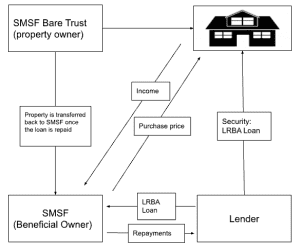
Continuing our theme of how to use Working Capital Loans for Business Success, we are pleased to provide the third in our series.
If you missed the previous articles they are; “Understanding Business Working Capital, a Vital Element for Business Success” and “Driving Business Success: The Essentials of Working Capital Finance”
This article goes one further step, to describe a sample of the working capital facilities that are available. We also provide a worked example of how the strategic use of Working Capital can help to drive business success.
Types of Working Capital Loans:
1. Short-Term Loans:
Short-term loans are a common form of working capital finance where businesses borrow a specific amount of money for a short duration, usually less than a year. These loans provide a quick injection of capital to cover immediate operational needs, such as payroll, inventory, or addressing cash flow gaps. Interest rates and terms vary, and businesses typically repay the loan in regular instalments.
2. Revolving Credit Lines:
A revolving credit line is a flexible form of working capital finance that provides a pre-approved credit limit. You can withdraw funds as needed and repay them over time. The key advantage is that once repaid, there are no interest costs and the credit line replenishes, allowing businesses to use the same pool of funds repeatedly. It’s like a financial safety net that provides ongoing support for managing day-to-day expenses and unexpected costs.
3. Invoice Financing:
Invoice financing involves selling accounts receivable (unpaid customer invoices) to a financial institution at a discounted rate. This provides you with an immediate cash injection, allowing you to access a portion of the funds tied up in pending invoices. The financial institution then collects the full invoice amount from the customer. Invoice financing is particularly useful for businesses facing cash flow gaps due to delayed payments from clients.
4. Trade Credit:
Trade credit is a form of working capital finance that involves extending the payment terms with suppliers. Instead of paying for goods or services upfront, the lender pays the supplier and you then pay the lender back in an agreed timeframe (usually up to 180-days). This has the effect of providing delayed payment terms, giving you additional time to generate revenue from the purchased inventory before settling the bill. This can help you manage short-term cash flow challenges effectively.
5. Inventory Financing:
Inventory financing specifically targets the funding of inventory purchases. You can use existing inventory as collateral to secure a loan or credit line. This type of working capital finance is ideal for businesses with substantial inventory requirements, such as retail or manufacturing. It ensures that these types of businesses have the necessary funds to purchase inventory without straining cash flow.
6. Supply Chain Financing:
Supply chain financing, also known as reverse factoring, involves collaborating with suppliers and financial institutions to optimise the payment process. Businesses can extend their payment terms to suppliers while offering them the option to receive early payment from a financial institution at a discounted rate. This benefits both parties by improving cash flow and reducing working capital cycles.
In many cases, the different types of finance can work alongside each other. The following is a hypothetical example of a business that purchases it’s stock from overseas, carries the stock in inventory and sells to its clients on credit terms. In this example, the business can manage its working capital in the following manner:
| Day | Transaction | Financing Event |
| One | Purchase Stock | Trade Credit Loan pays the Supplier |
| Thirty | Receive Stock | Inventory Finance repays the Trade Credit Loan |
| Sixty | Sell Stock on credit terms | Debtor Finance repays the Inventory Loan |
| Ninety | Customer Pays the Invoice | Debtor Finance Facility is Repaid |
In the above example, the business has used working capital for business success because it funds the entire working capital cycle from start to finish with no, or very little capital cost to them. The whole cycle is financed. The alternative is that the business pays the supplier according to their trade terms. They then carry the cost of the stock until it is sold, they then wait for payment by their client. The end payment could easily be 90-days + from the time of the original cash outlay, which is an expensive exercise.
Conclusion:
Each of these types of working capital finance has its advantages and considerations.
The choice depends on the specific needs, financial health, and goals of the business. It’s crucial to thoroughly assess each option and select the one that aligns best with the business’s operational requirements and overall financial strategy.
We are passionate about business success and we are experts in business working capital. If you would like to understand what is possible for your business, why not give us a call?
